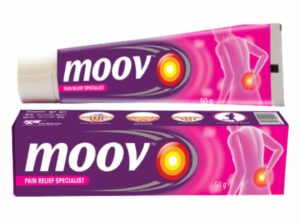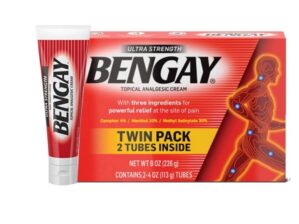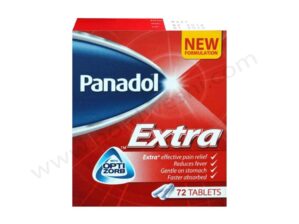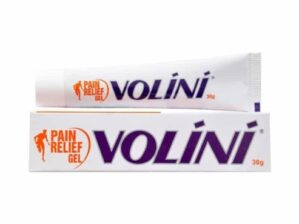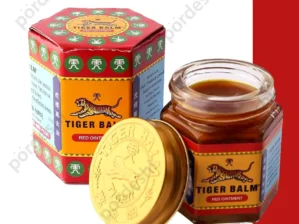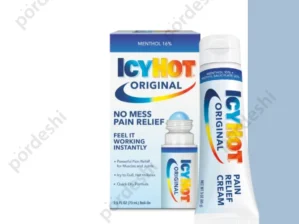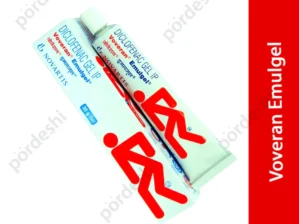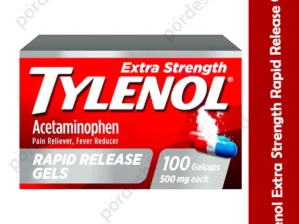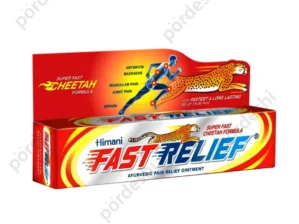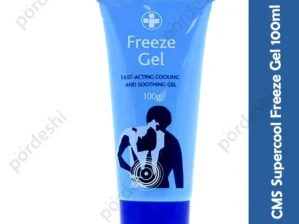- View cart You cannot add that amount to the cart — we have 1 in stock and you already have 1 in your cart.
Showing 1–12 of 44 results
Moov Cream 75g price in Bangladesh
Original price was: 480.00৳.420.00৳Current price is: 420.00৳.Bengay Ultra Pain Relieving Cream in Bangladesh
Original price was: 1,550.00৳.1,450.00৳Current price is: 1,450.00৳.Panadol Extra 72 Tablets price in Bangladesh
Original price was: 1,500.00৳.1,443.00৳Current price is: 1,443.00৳.Icy Hot Original
Original price was: 1,198.00৳.1,110.00৳Current price is: 1,110.00৳.Tylenol Extra Strength Rapid Release Gels
Original price was: 2,700.00৳.2,649.00৳Current price is: 2,649.00৳.Zandu Himani Fast Relief
Original price was: 600.00৳.545.00৳Current price is: 545.00৳.Comprehensive Guide to Pain Relief: Types, Benefits, and Choosing the Best Solutions
When your joints are painful, or your muscles ache, finding effective pain relief becomes essential. Topical painkillers, those that you apply to your skin, can offer significant relief. Available both over-the-counter and by prescription, these products come in various forms and contain different active ingredients.
In this comprehensive guide, we will explore everything you need to know about pain relief, from understanding the types and benefits of various pain relief methods to tips for choosing the best solutions. By the end, you’ll be well-equipped to make informed decisions about managing your pain effectively.
What is Pain Relief?
It known as analgesia, refers to the reduction or elimination of pain through various treatments and medications. The goal is to improve quality of life by alleviating discomfort, whether it be from chronic conditions, injuries, or post-surgical recovery.
Why Pain Relief is Important
Effective pain management is crucial for several reasons:
- Improves Quality of Life: Alleviating pain allows individuals to perform daily activities without discomfort.
- Enhances Mobility: It can improve joint and muscle function, making physical activity easier.
- Mental Health: Chronic pain can lead to anxiety and depression. Managing pain effectively can improve overall mental well-being.
- Faster Recovery: Proper pain management can speed up the recovery process post-injury or surgery.
Who Needs Pain Relief?
It is essential for various groups:
- Chronic Pain Sufferers: Individuals dealing with conditions like arthritis, fibromyalgia, or back pain.
- Post-Surgical Patients: Those recovering from surgeries often require pain management.
- Injury Victims: People suffering from sports injuries, sprains, or fractures.
- Acute Pain Cases: Individuals experiencing sudden pain from infections or other short-term conditions.
Natural Sources of Pain Relief
Natural remedies can offer relief without the side effects of pharmaceuticals:
- Turmeric: Contains curcumin, which has anti-inflammatory properties.
- Ginger: Known for its anti-inflammatory and pain-relieving effects.
- Capsaicin: Found in chili peppers, it can relieve joint and muscle pain when applied topically.
- Willow Bark: Acts similar to aspirin in reducing pain and inflammation.
- Essential Oils: Oils like lavender and eucalyptus can relieve pain when massaged into the skin.
Types of Pain Relief
Over-the-Counter (OTC) Pain Relief
Analgesic Creams, Rubs, and Sprays
These topical painkillers are applied directly to the skin over painful muscles or joints. Common ingredients include:
- Counterirritants: Ingredients like menthol and camphor create a cooling or burning sensation that distracts the mind from pain.
- Salicylates: Found in some creams, these ingredients help with pain, especially in joints close to the skin.
- Capsaicin: The main ingredient in hot chili peppers, capsaicin can relieve joint and nerve pain.
- Lidocaine: A numbing agent available as a gel or patch.
Hot Packs and Cold Packs
- Cold Packs: Useful for numbing sore areas and reducing inflammation. Ideal for arthritis flares or injuries like sprained ankles.
- Hot Packs: Help relax muscles and increase blood flow to the affected area, aiding in pain relief.
Prescription Pain Relief
Non-Opioids
- NSAIDs: Prescription-strength nonsteroidal anti-inflammatory drugs.
- Topical NSAIDs: Offer pain relief with fewer side effects compared to their oral counterparts.
Opioids
- Morphine, Oxycodone: Reserved for severe pain, these are prescribed with caution due to their addictive potential.
Benefits of Using Pain Relief Methods
- Effective Pain Management: Different methods cater to varying levels of pain.
- Improved Functionality: Relieving pain can restore mobility and functionality.
- Mental Well-being: Reducing pain can alleviate stress and improve mood.
- Customized Solutions: Multiple options allow for tailored pain management strategies.
Risks and Side Effects
Like all medications, pain relief methods come with risks:
- NSAIDs: Can cause stomach bleeding, especially with long-term use.
- Opioids: Carry a risk of addiction and other side effects.
- Capsaicin: May cause a burning sensation when first applied.
- Lidocaine: Should not be used by individuals with liver problems or on heart rhythm drugs without consulting a doctor.
How to Choose the Best Pain Relief Solution
- Consult a Healthcare Provider: Always seek medical advice before starting any new pain relief regimen.
- Consider Your Condition: Different pains require different treatments. Acute pain may need OTC options, while chronic pain might require prescription solutions.
- Review Ingredients: Be aware of what you are applying to your skin or ingesting, especially if you have allergies or sensitivities.
How We Chose the Best Pain Relief Products
Our selection criteria included:
- Efficacy: Based on clinical studies and user reviews.
- Safety: Products with minimal side effects.
- Ingredients: Focused on natural and effective ingredients.
- Accessibility: Availability and ease of use.
Ingredients: What to Pay Attention To
- Menthol and Camphor: Effective counterirritants but may cause skin irritation.
- Salicylates: Good for joint pain but avoid if allergic to aspirin.
- Capsaicin: Powerful but requires consistent use for best results.
- Lidocaine: Effective numbing agent but consult a doctor if you have underlying conditions.
Tips for Effective Pain Relief
- Follow Directions: Always use pain relief products as directed.
- Consistency: Regular application yields better results.
- Combine Methods: Use a combination of hot/cold packs and topical treatments for comprehensive relief.
- Stay Active: Gentle exercise can complement pain relief treatments.
Most popular Pain Relief Brands
Bengay , Dr Ortho, Volini, Moov, Himalaya, tiger Blam, Iodex
Top Picks for Bangladesh
- Bengay Ultra Pain Relieving Cream: Known for its deep-penetrating formula, Bengay Ultra stands out as a leading choice for individuals seeking immediate and effective relief from muscle and joint pain. Its key ingredients include menthol and methyl salicylate, which work together to provide a cooling sensation followed by lasting warmth. This dual action not only distracts from the pain but also stimulates blood flow to the affected area, aiding in the recovery process. Suitable for adults and children over 12 years of age, Bengay Ultra Pain Relieving Cream is widely recommended for the temporary relief of minor aches and pains associated with backache, arthritis, strains, bruises, and sprains. Its non-greasy formula ensures it can be easily applied without leaving a residue, making it a practical option for daytime use.
- Ethyl Chloride Spray : Known as an “instant ice cube,” this spray contains an anesthetic ingredient that causes a numbing effect when sprayed on the skin. It is useful for pain relief from sprains, strains, and muscle spasms. Its quick-acting formula makes it ideal for athletes or individuals who need immediate relief to continue with their activities.
- Dr Ortho Pain Relief Oil: A standout in the realm of natural pain relief solutions, It is crafted from a blend of eight different herbs, which are known for their exceptional anti-inflammatory and analgesic properties. This powerful concoction is designed to offer relief from various types of musculoskeletal pains, including arthritis, muscle stiffness, and joint pain. The key ingredients, such as eucalyptus, turmeric, and camphor, penetrate deep into the skin, providing a warming sensation that helps to relax muscles and ease pain. Ideal for use by individuals of all ages, It is especially beneficial for those leading an active lifestyle or the elderly who suffer from chronic joint issues. Its natural composition ensures minimal side effects, making it a safe option for regular use.
- Iodex Rapid Action Spray
- Volini Pain Relief Gel
- Moov Cream
Conclusion
Effective pain relief is crucial for improving quality of life and maintaining functionality. By understanding the various types of pain relief, their benefits, risks, and how to choose the best options, you can make informed decisions that align with your needs.
20 Frequently Asked Questions (FAQs)
- What is the best pain relief for arthritis?
- Topical NSAIDs and capsaicin creams are effective for arthritis pain.
- Can I use multiple pain relief products at once?
- Consult a healthcare provider before combining products.
- What are natural alternatives to NSAIDs?
- Turmeric, ginger, and willow bark are effective natural alternatives.
- How often can I apply a pain relief cream?
- Follow the product’s instructions or consult your doctor.
- Are there any pain relief options for pregnant women?
- Consult a healthcare provider for safe options.
- Can pain relief patches be used overnight?
- Some patches are designed for extended use; check the product label.
- What should I do if a pain relief cream causes skin irritation?
- Discontinue use and consult a healthcare provider.
- Are there pain relief options for children?
- Consult a pediatrician for appropriate options.
- How do I store pain relief products?
- Store in a cool, dry place away from direct sunlight.
- Can I use pain relief sprays on open wounds?
- No, avoid applying to broken skin.
- Is it safe to use expired pain relief products?
- No, always check expiration dates and replace expired products.
- Can I use pain relief products if I have sensitive skin?
- Look for hypoallergenic options and consult a dermatologist.
- Are there any dietary supplements for pain relief?
- Supplements like omega-3 fatty acids and glucosamine can help; consult a healthcare provider.
- How do I know if a pain relief product is working?
- Relief should occur within a specified time; if not, consult a healthcare provider.
- Can pain relief products interfere with other medications?
- Yes, always consult a healthcare provider before combining treatments.
- What are the signs of an allergic reaction to pain relief products?
- Rash, itching, swelling, and difficulty breathing; seek medical attention immediately.
- Can I use pain relief products daily?
- Consult a healthcare provider for long-term use guidance.
- Are there any pain relief options for migraines?
- Topical treatments like menthol rubs can help; consult a healthcare provider for more options.
- What is the fastest-acting pain relief option?
- Lidocaine patches and sprays often provide quick relief.
- How do I choose the best pain relief product for my needs?
- Consider your pain type, consult a healthcare provider, and review product ingredients and reviews.
By understanding the various aspects of pain relief, you can make informed decisions to manage your pain effectively and improve your quality of life.



 Hair Care
Hair Care
 Vibrating Rings
Vibrating Rings

 Oral Care
Oral Care
